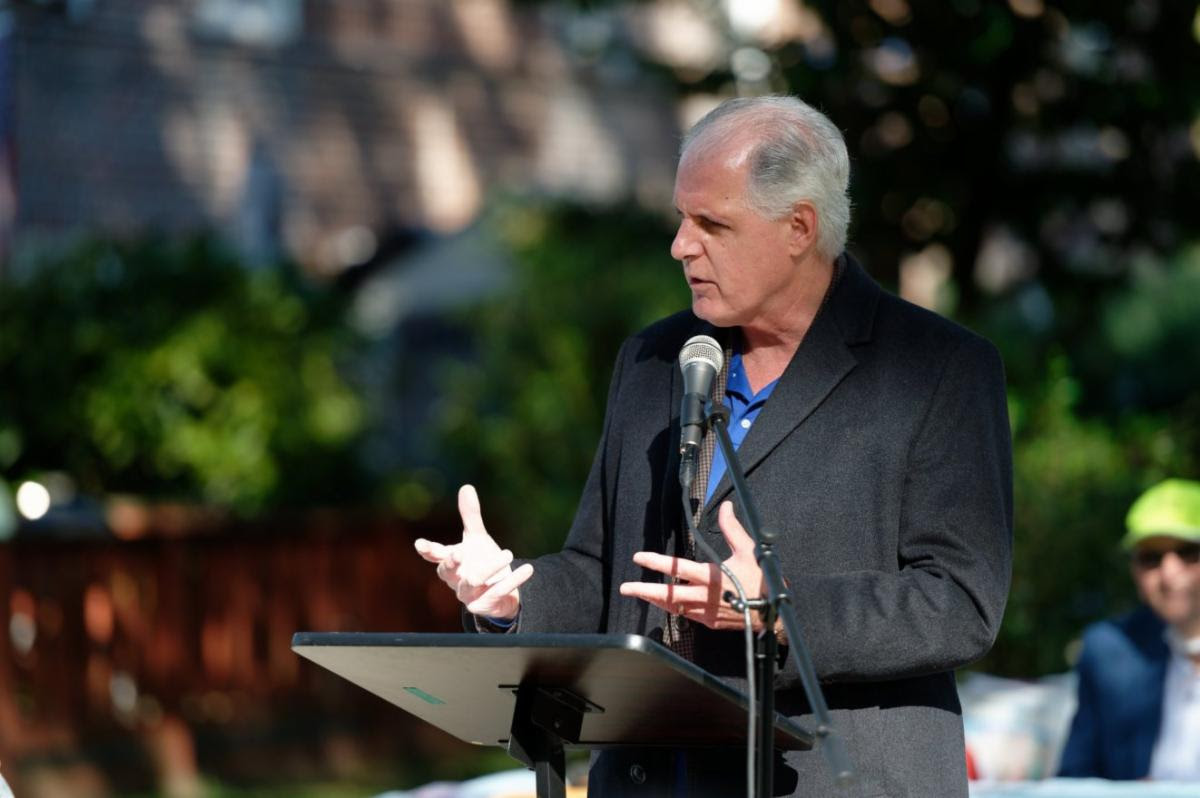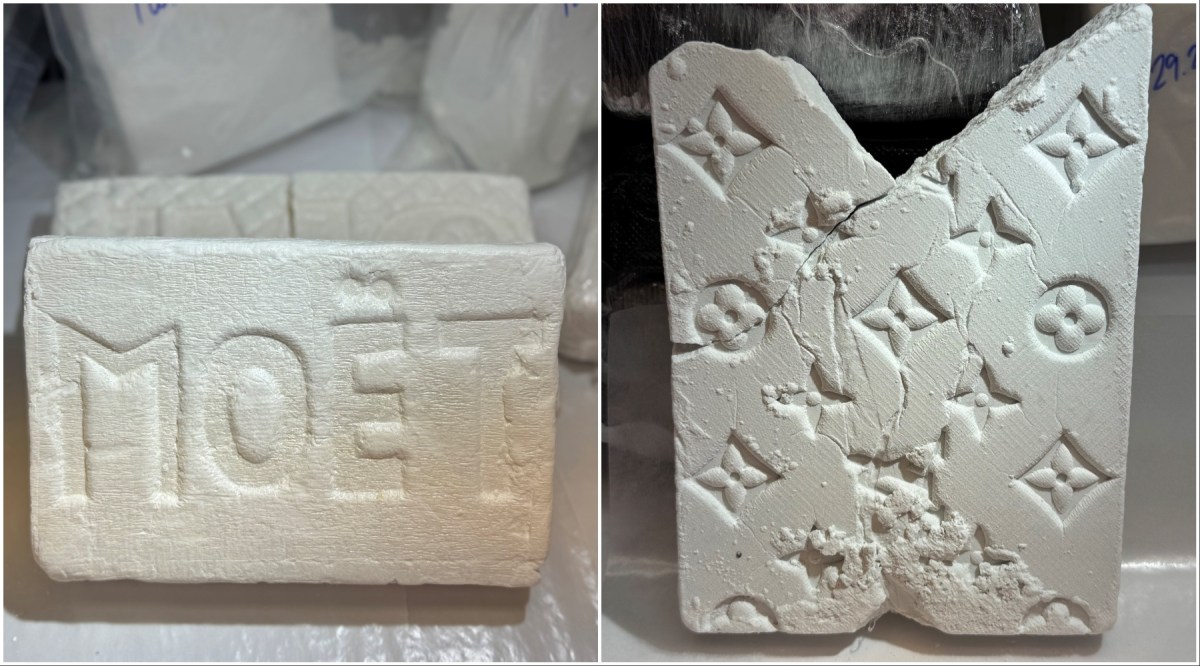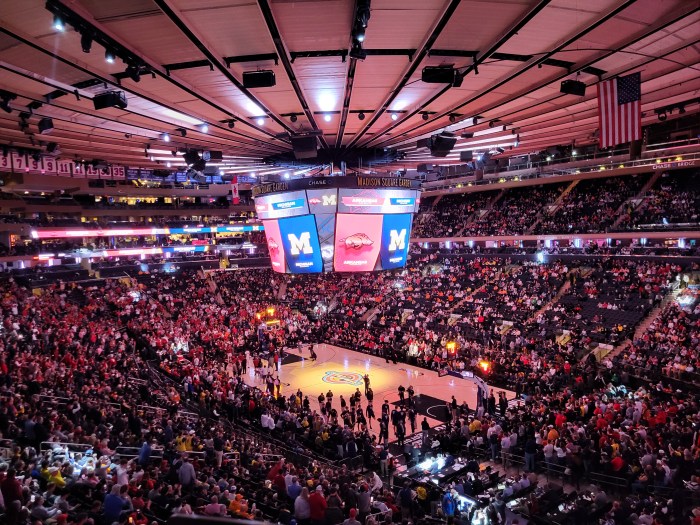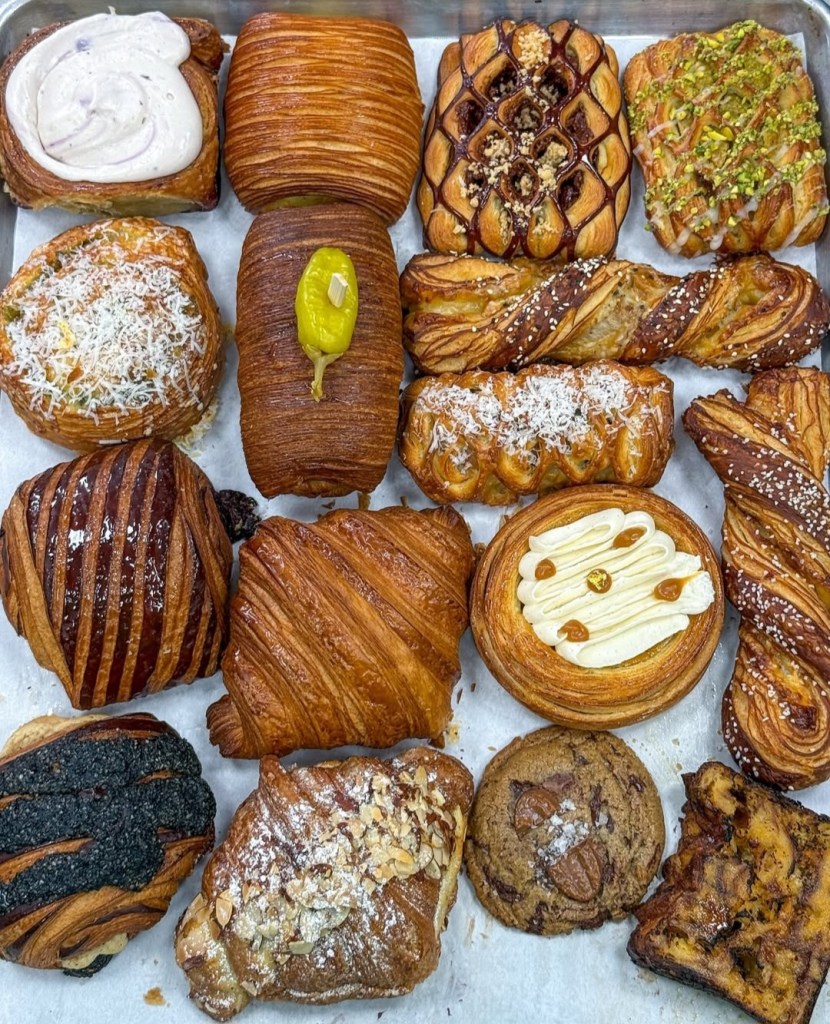
The lobby of the Woolworth building at 233 Broadway. The stairs once led to the Irving Bank, which occupied several floors of the building when it opened in April 1913. Corbels in the lobby of the Woolworth building depict the men who played a role in creating it. Architect Cass Gilbert is shown holding a model of the building, near right, and Frank Woolworth, who hired him.
BY TERESE LOEB KREUZER | On April 24, 1913, U.S. President Woodrow Wilson pushed a button in Washington, D.C. that fired up dynamos in the basement of the newly finished Woolworth building at 233 Broadway in New York City. The lights in the building flashed on all at once as thousands of people in City Hall Park watched. Thousands more stood on the New Jersey side of the Hudson River to see the spectacle. Newspaper accounts said that people out at sea, 100 miles away, witnessed the flash of electric light.
At the time, the Woolworth building at 792 feet was the tallest building in the world. It remained so until 1930, when the Chrysler Building surpassed it.
As the Woolworth building celebrates its centennial, it is, of course no longer anywhere near the tallest building even in New York City, but many people still consider it to be one of the city’s most beautiful skyscrapers. The exterior, with its delicate tracery of terra cotta ornamentation and its copper-clad roof, is a well-known feature of the skyline.
The interior of the Lower Manhattan building is less well known except to the people who work there. Since the nearby World Trade Center was attacked on Sept. 11, 2001, the lobby has been closed to visitors with occasional exceptions. This year, however, in honor of the centennial, the Skyscraper Museum in Battery Park City has organized an exhibit about the Woolworth building and has also arranged a few tours for museum members.

What they see when they enter the lobby is as awe-inspiring as it was a hundred years ago when Frank W. Woolworth, the owner of hundreds of five-and-ten cent stores in the United States, Canada and England, first unveiled it.

A vaulted ceiling soars above their heads, inlaid with glass tiles infused with gold leaf. The intricate mosaics depict exotic birds and floral designs interspersed among geometric forms. In front of them is a dramatic marble staircase surmounted by a stained-glass skylight. The lobby walls are made of a warm-colored marble imported from Greece. Sculptures, paintings and bronze fixtures complete the effect of grandeur and opulence.
“Woolworth wanted people to come into the lobby and see it,” said Gail Fenske, an architectural historian and co-curator of the museum’s exhibit. “He was a big fan of the Eiffel Tower that drew many visitors. Woolworth expected people to visit the lobby and the observatory. Thousands of people did — paying 50 cents a ticket. Throughout the ’20s it was the most popular observatory in New York.”
The observatory has been closed since 1945.
Woolworth, who was born on April 13, 1852 to a poor farming family in Upstate New York, came up with the idea of having stores that would sell everything at a fixed price — initially a nickel, and then a dime. He opened his first successful store in Lancaster, Penn. in 1879 — a date that is memorialized in the lobby skylight. The skylight is also inscribed with the date 1913 when Woolworth’s building proclaimed to the world that he had become one of its richest men.
“I think there is a spirit to the Woolworth building that has everything to do with the idea of the American success story,” said Fenske. “At the opening, journalists called Woolworth the true Horatio Alger, rags to riches. There’s a sense of aspiration about the building. You look at that building and you think, these are people who aspired to something, and not just Frank Woolworth, who was staggeringly successful from a financial standpoint, but also the architect Cass Gilbert.”
Gilbert, who designed the U.S. Custom House at Bowling Green and 90 West St. before Woolworth hired him, was, like his client, a self-made man. His father died when he was very young, leaving his mother with three young children. She moved the family to Minnesota, where Gilbert began working in an architectural office at the age of 17.
No one who enters the Woolworth building can forget about the men who made it. Sculpted caricatures of Woolworth and Gilbert and others who gave birth to the building look down on visitors from the lintels they support. Woolworth is depicted counting his money. Gilbert holds a model of the building itself.
Gunvald Aus, the building’s engineer, has his arms wrapped around a steel truss. Although steel structures enrobed in terra cotta had previously been built, none were as tall as this building, which presented engineering challenges for Aus to solve.
The building rests on concrete and steel caissons, most of them 14 feet in diameter, that had to be driven down through around 100 feet of muck to Manhattan bedrock. It also had to be reinforced so that it would not sway in the wind.
Louis Horowitz, president of Thompson-Starrett, the building’s construction company, is depicted making a telephone call. Telephones, like electricity, were just decades old at that time, and not everyone had them. The Woolworth building was a proud amalgam of the latest technology with the most sumptuous materials and craftsmanship.
Edward Hogan, the building’s real estate agent, is shown counting on his fingers. Woolworth created an ornate office for himself on the 24th floor and utilized part of the 23rd floor as well for his company, but the rest of the building was rented to others. He wanted to make a profit on it — and he did.
Irving National Exchange Bank was one of the principal tenants. In the lobby sculptures, Lewis Pierson, president of the bank, has been equipped with a ticker tape machine. There are other figures, too, who have not been identified.
“Woolworth was very proud of the building,” said Fenske, who curated the exhibit with Carol Willis, the museum’s director. “He spoke of traveling in Europe and seeing a poster in which the Woolworth building was featured as a building that represented New York. He was proud that he created a landmark to New York City and that people understood New York through his project.”
Those who are unable to get into the lobby of the Woolworth building can still learn about it at the Skyscraper Museum exhibit.
It includes original drawings of the structure from the archives of the New York Historical Society and from Gilbert’s office. Items related to Woolworth and his stores are also on display.
The building’s handsome terra cotta cladding is documented with mural-sized photographs accompanied by photographs of Atlantic Terra Cotta’s works at Perth Amboy, N.J. and Tottenville, Staten Island, where the terra cotta was made.
The Woolworth building is contemporary with Grand Central Terminal, which also celebrates its 100th anniversary this year, and with the Municipal Building at 1 Centre St., which was completed in 1912.
Fenske speculated as to why so much major construction was happening at that time.
“I think you can point to prosperity,” she said. “New York was a prosperous port. It was at the height of its power economically. There were people who believed in the city and wanted to invest in it. And what I am really struck by is the commitment to really improving the city with these beautiful buildings that stay with us today.”



































